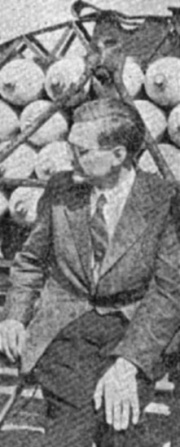Johannes Schmidt
From The Space Library
Johannes Albert Nichalaus Schmidt was born in the Altona district of Hamburg in 1903. He studied in the Technische Hochschule, Munich and later in the Technische Hochschule Berlin where he became a Dipl. Ing and later a Dr. Ing. In 1928 he entered the service of the A.E.G. and later that of Siemens. In 1933 he was appointed to the D.V.L. and the Argus Plant, where he was employed on pumps and associated equipment. In 1941 he transferred to the service of H. Walter (of Kiel) and worked on rockets. He worked at Kiel during the war on the Walter hypergolic rocket for the Me-163 interceptor, and engine he was credited with designing. In February 1945 he and his colleagues left Kiel on bicycles. He was captured at the end of the war and taken to the Saenger institute. He was employed by the British Ministry of Supply starting in January 1946 in Germany until being relocated to the Westcott experimental rocket facility in England at the end of 1946. He worked there for the fledgling Rocket Propulsion Establishment on further refinements of the early hypergolic rockets he had first started in Germany.
Schmidt was killed in a massive explosion during an engine test at Westcott on November 14 1947. Officials later stated that he was working on a JATO unit and during a dual engine test one engine prematurely ignited the other leading to an explosion heard and felt several miles away. Also killed in the explosion was J.P. Rowlands a British scientist. A third victim, J.A. Salmon died later in the hospital. 11 others were injured that day. The investigation of the blast was finally attributed to a single engine of the Walter 109/501 A.T.O. type. The unit was powered by a mixture of petroleum, hydrogen peroxide and calcium permanganate. Schmidt was cremated in England after the explosion.

